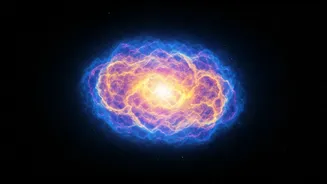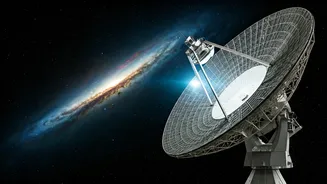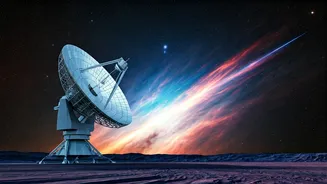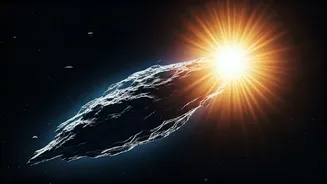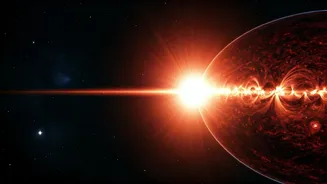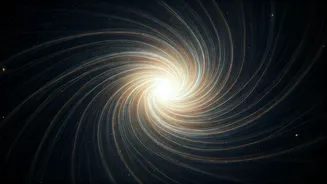A Cosmic Discovery
The European Southern Observatory facilitated a monumental achievement by capturing the earliest phases of a supernova's development. This marked the first
instance of directly observing the initial stages of this astronomical phenomenon, a process previously shrouded in mystery. The groundbreaking images showcase a dying star enveloped by a disk of dust. This discovery provides crucial data for understanding stellar evolution and the mechanisms behind these dramatic cosmic events. The detailed observations offer a unique window into the processes that occur as massive stars reach the end of their lives, providing insights into element formation and the dynamics of the interstellar medium. The ability to witness these events allows scientists to test and refine existing models of stellar death and the subsequent impact on the surrounding environment.
The Dust Disk
Central to the visual narrative is the presence of a dust disk that orbits the dying star. This disk, composed of materials ejected by the star, plays a pivotal role in the supernova's evolution. Its existence offers hints about the star's previous structure and the manner in which it shed its outer layers. As the star collapses and explodes, the dust disk will either be destroyed or dramatically altered. The interaction between the supernova's shockwave and the surrounding dust is key to understanding the explosion’s brightness and the ultimate dispersion of elements into space. Analyzing the composition and distribution of the dust provides insights into the types of elements created and scattered by supernovae, impacting galactic environments and the formation of new stars and planets. The presence and properties of the dust disk serve as key indicators of the star's nature before the supernova event.
Observing the Unseen
This achievement is significant because, traditionally, these early phases of supernovae have been difficult to observe directly. The rapid timescale of the events combined with the immense distances involved, makes it challenging for scientists to capture these initial moments. The technological capabilities of the European Southern Observatory allowed for this milestone. Sophisticated instruments were instrumental in detecting the faint light emitted during the earliest stages of the supernova. Detailed observation of the light curves and spectral data enabled scientists to analyze the dynamics of the expanding material and understand its composition. These capabilities have paved the way for future discoveries, allowing further investigation into the dynamics of supernovae and their cosmic significance. The detailed analyses of these observations offer key insights into stellar astrophysics and the life cycles of stars.
Supernova's Impact
Supernovae are incredibly powerful events, influencing the structure and composition of galaxies. They are crucial for creating heavy elements essential for forming planets and sustaining life. The study of supernovae is vital to understanding the origin of elements. Supernovae also play a critical role in distributing these elements throughout the universe. The shockwaves generated by a supernova can compress interstellar gas, triggering the formation of new stars and expanding star-forming regions. Analyzing the aftermath of supernovae offers important clues about the processes that drive galactic evolution and star formation. The debris from a supernova, including elements, influences the composition of subsequent generations of stars and planets. Supernovae are thus a key process in the cycle of cosmic creation and destruction.
Future Implications
The ability to observe supernovae in their earliest stages represents a significant advancement. Researchers can fine-tune their astronomical models and conduct more accurate simulations of stellar evolution. This observation of the supernova provides a crucial opportunity to refine existing models. Subsequent studies will build on this initial discovery. Advancements in telescopes and observational techniques could lead to even more detailed and early observations. Through continuous observation and detailed study of various supernovae, scientists are poised to discover even more about the nature of these events. This will contribute to a more profound understanding of the universe. This will enrich the data and our insights into the cosmic processes behind supernovae, opening the door for new theories and discoveries in astronomy.


